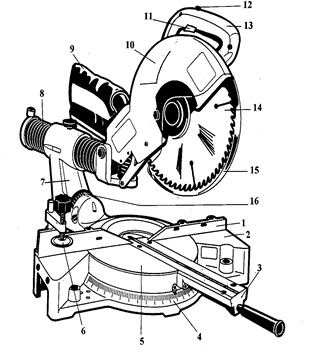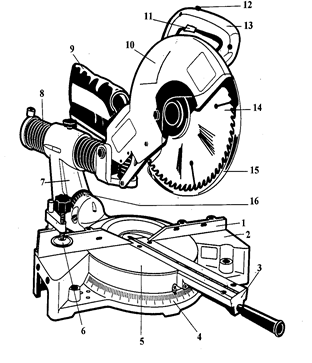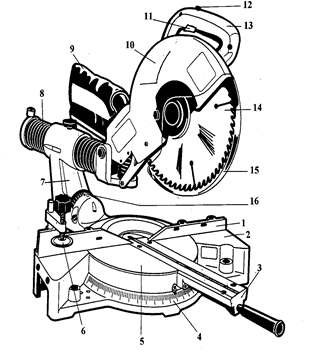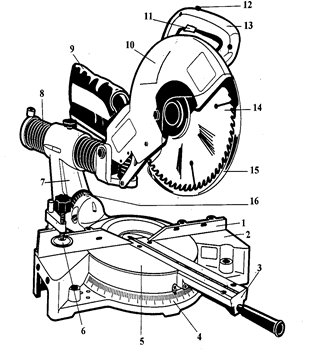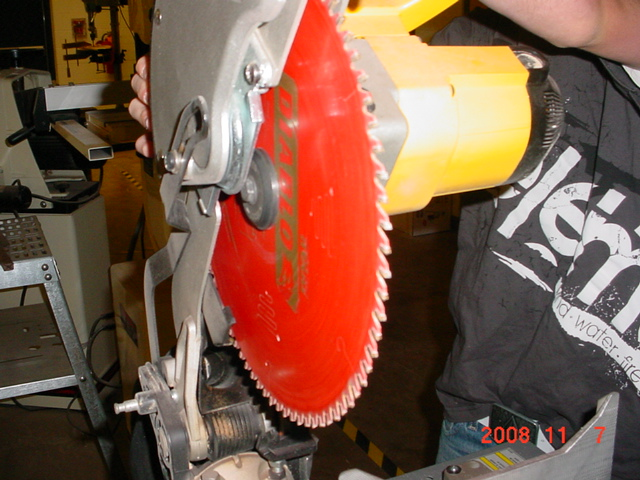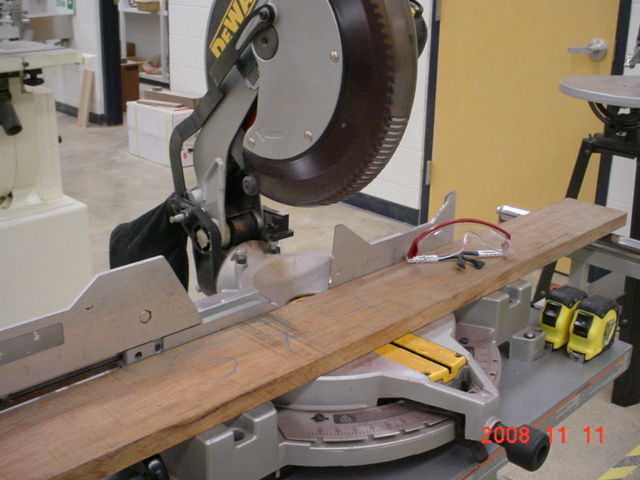Miter Saw Procedures And Safety Quiz! Trivia
(118).jpg)
Miter saw procedures and safety quiz trivia. This tool is the go-to for woodworkers who want to make angled cuts on a wooden surface quickly. It is an effective tool and but at the same time has some dangers attached to it. In this quiz, you will get to test out just how much you know about operating this tool and some of the safety measures you should follow.
- 1.
Always keep hands at least _________ inches away from the blade.
- A.
12
- B.
4
- C.
2
- D.
8
- E.
7
Correct Answer
C. 2Explanation
It is important to always keep hands at least 2 inches away from the blade to prevent any accidents or injuries. This distance allows for a safe margin in case of any sudden movements or slips while working with the blade. Keeping hands too close to the blade increases the risk of getting cut or injured. Therefore, maintaining a minimum distance of 2 inches is crucial for safety.Rate this question:
-
- 2.
Allow the ____ to get to full speed before cutting.
- A.
Guard
- B.
Wood
- C.
Blade
- D.
Switch
Correct Answer
C. BladeExplanation
The blade will not cut properly if it is moving slowly.Rate this question:
-
- 3.
Make sure blade is NOT in _________ with material when starting machine.
- A.
Contact
- B.
Line
- C.
Sharp
- D.
Direction
Correct Answer
A. ContactExplanation
Motor will not turn if it is stuck against the wood.Rate this question:
-
- 4.
Make sure the bevel and Table are ________ before using the machine.
- A.
In line
- B.
Working
- C.
Helped
- D.
Locked
- E.
None of the above
Correct Answer
D. LockedExplanation
the machine may move during operation if not locked downRate this question:
-
- 5.
Always start the machine in the __________ position.
- A.
Up
- B.
Down
- C.
Locked
- D.
Unplugged
- E.
None of the above
Correct Answer
A. UpExplanation
The blade can spin freely in this position. It will not hit the wood.Rate this question:
-
- 6.
Keep hands on the largest part of the _____________ when cutting miters.
- A.
Fence
- B.
Guard
- C.
Switch
- D.
Wood
- E.
None of the above
Correct Answer
D. WoodExplanation
Longest part of the stock or piece of wood you are cutting.Rate this question:
-
- 7.
Always remove __________ from table when finished.
- A.
Hands
- B.
Scraps and sawdust
- C.
Table
- D.
Guard
Correct Answer
B. Scraps and sawdustExplanation
It is important to remove scraps and sawdust from the table when finished because they can create a messy and cluttered workspace. Leaving them on the table can also pose a safety hazard, as they can cause slips, falls, or accidents. By removing the scraps and sawdust, the table is kept clean and ready for the next task or user.Rate this question:
-
- 8.
Never operate the machine without your __________ present.
- A.
Sleeves
- B.
Cutter buddy
- C.
Sawdust
- D.
Materials
- E.
All of the above
Correct Answer
B. Cutter buddyExplanation
It is important to never operate the machine without your cutter buddy present. This suggests that the presence of a cutter buddy is necessary for safe operation of the machine. The other options listed (sleeves, sawdust, materials) may also be important factors to consider when operating the machine, but the presence of a cutter buddy is specifically emphasized as a requirement.Rate this question:
-
- 9.
Name the part that protects the user from accidentally touching the blade.
- A.
Blade
- B.
Guard
- C.
Switch
- D.
Table
- E.
Fence
Correct Answer
B. GuardExplanation
The part that protects the user from accidentally touching the blade is called the guard. It is designed to cover the blade and prevent any direct contact with it, reducing the risk of injury. The guard acts as a barrier between the user's hand or body and the sharp blade, providing a safety measure while operating the tool.Rate this question:
-
- 10.
Name the Part 14
- A.
Blade
- B.
Guard
- C.
Switch
- D.
Table
- E.
Fence
Correct Answer
A. Blade -
- 11.
Name Part # 5
- A.
Table
- B.
Blade
- C.
Switch
- D.
Handle
- E.
Fence
Correct Answer
A. Table -
- 12.
Name part 1.
- A.
Handle
- B.
Guage
- C.
Fence
- D.
Dust Bag
Correct Answer
C. Fence -
- 13.
What part is shown in Red
- A.
Switch
- B.
Dust bag
- C.
Handle
- D.
Blade
- E.
None of the above
Correct Answer
D. BladeExplanation
The part shown in red is the blade.Rate this question:
-
- 14.
Before making a cut with a miter saw, it is crucial to ensure the blade is properly aligned with the marked cutting line on the workpiece.
- A.
True
- B.
False
Correct Answer
A. TrueExplanation
Accurate alignment of the blade with the intended cutting line is essential for achieving precise and safe cuts on a miter saw. Misalignment can lead to inaccurate cuts, wasted material, and even dangerous kickback or binding of the workpiece. Before starting the cut, carefully position the workpiece against the fence and ensure the blade is aligned with the marked cutting line. This ensures that the cut is made exactly where intended, minimizing the risk of errors and accidents.Rate this question:
-
- 15.
True or False. Hold the stock FIRMLY down on the table AND against the fence as you are cutting.
- A.
True
- B.
False
Correct Answer
A. TrueExplanation
To ensure a safe and accurate cut, it is important to hold the stock firmly down on the table and against the fence. This helps to prevent any movement or slipping of the stock during the cutting process, which could lead to inaccurate cuts or potential accidents. By firmly holding the stock in place, the user maintains control over the stock and reduces the risk of injury.Rate this question:
-
- 16.
A kickback usually occurs when someone tries to cut cylindrical (round) stock.
- A.
True
- B.
False
Correct Answer
A. TrueExplanation
A kickback usually occurs when someone tries to cut cylindrical (round) stock because the round shape of the stock can cause it to roll or spin during the cutting process. This can lead to the stock being thrown back towards the person operating the cutting tool, causing injury or damage. Therefore, it is important to take precautions and secure the round stock properly to prevent kickbacks.Rate this question:
-
- 17.
A kickback can easily occur if the operator is not holding the stock firmly against the fence and table.
- A.
True
- B.
False
Correct Answer
A. TrueExplanation
If the operator is not holding the stock firmly against the fence and table, there is a higher chance of a kickback occurring. A kickback is a dangerous situation where the stock being cut is forcefully thrown back towards the operator. By not holding the stock firmly, it is more likely to move or shift during the cutting process, increasing the risk of a kickback. Therefore, the statement is true.Rate this question:
-
- 18.
The best way to cut accurately is to place the blade against the stock and then turn the switch on.
- A.
True
- B.
False
Correct Answer
B. FalseExplanation
The statement suggests that the best way to cut accurately is to place the blade against the stock and then turn the switch on. However, this is incorrect. The best way to cut accurately is to first align the blade with the desired cutting line on the stock, and then turn the switch on. By aligning the blade before turning on the switch, you ensure that the cut will be precise and accurate.Rate this question:
-
- 19.
When using a miter saw, it is acceptable to leave the blade spinning after completing a cut to save time on the next operation.
- A.
True
- B.
False
Correct Answer
B. FalseExplanation
Leaving the blade spinning after completing a cut on a miter saw poses a significant safety hazard. The operator or others nearby could accidentally come into contact with the rotating blade, leading to severe injury. Proper miter saw procedures dictate that the blade should be allowed to come to a complete stop before removing material, making adjustments, or leaving the work area. This ensures that the saw is in a safe and controlled state, minimizing the risk of accidents.Rate this question:
-
- 20.
The board you are cutting must be at least _____ inches on the side of the blade that you are cutting.
- A.
2
- B.
4
- C.
6
- D.
8
- E.
10
Correct Answer
D. 8Explanation
The correct answer is 8. This means that the board you are cutting must be at least 8 inches on the side of the blade that you are cutting. This requirement ensures that the board is large enough to be safely cut without causing any accidents or damage.Rate this question:
-
Quiz Review Timeline +
Our quizzes are rigorously reviewed, monitored and continuously updated by our expert board to maintain accuracy, relevance, and timeliness.
-
Current Version
-
Oct 01, 2024Quiz Edited by
ProProfs Editorial Team -
Jan 08, 2009Quiz Created by
Frankpritchett
- Back Safety Quizzes
- Chemistry Safety Quizzes
- Drill Press Safety Quizzes
- Electrical Safety Quizzes
- Fire Safety Quizzes
- General Safety Quizzes
- Kitchen Safety Quizzes
- Lathe Safety Quizzes
- Office Safety Quizzes
- Online Safety Quizzes
- Patient Safety Quizzes
- Radiation Safety Quizzes
- Safe Lifting Quizzes
- Sander Safety Quizzes
- Shop Safety Quizzes
- Work Safety Quizzes
- Workplace Safety Quizzes



